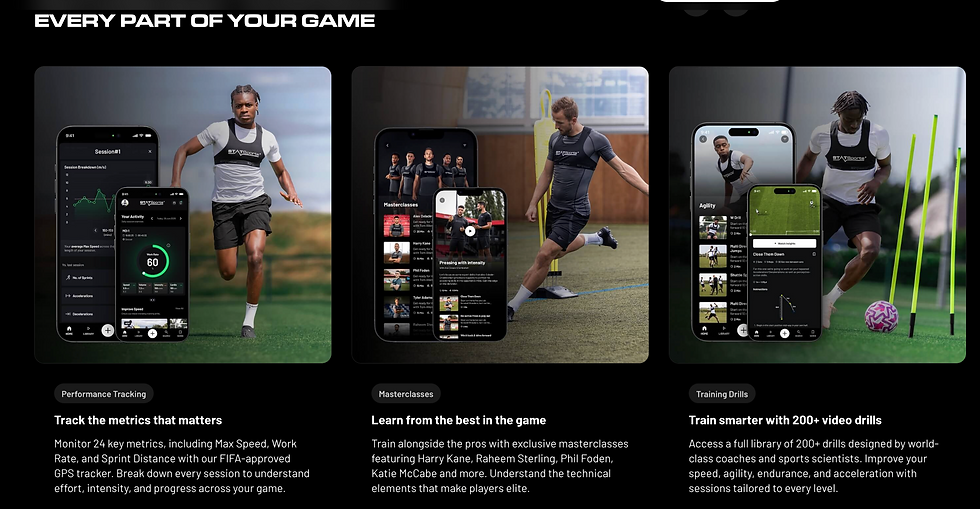Improve your passing ability towards professional standards
- Ian McClurg - MSc Performance Coaching

- Mar 26
- 3 min read
Passing is one of the most important skills for professional soccer players, regardless of position. It is the foundation of team play, allowing players to control the game, create chances, and maintain possession.
For young soccer players aspiring to go pro, individual passing practice should be a key part of their overall training routine. The ideal amount of time depends on their age, skill level, and total weekly training load, but here’s a general guideline:
Recommended Passing Practice Time
Ages 8-12: 3-5 hours per week
Ages 13-16: 5-7 hours per week
Ages 17+: 7-10+ hours per week
This should include a mix of short and long passing, one-touch passes, driven passes, and passing with both feet. Drills should focus on accuracy, weight, timing, and technique under different conditions.
Here’s why passing is so crucial at the professional level:
1. Essential for Possession & Control
Teams that pass well dictate the tempo of the game.
Good passing allows teams to retain possession and reduce defensive pressure.
Top teams prioritize quick, accurate passing to break down opponents.
2. Key for Attacking Play
Creative passes unlock defenses and create goal-scoring chances.
Passing combinations (e.g., one-twos, through balls, switches of play) are crucial for breaking defensive lines.
High-level teams rely on progressive passing to move the ball efficiently into attacking areas.
3. Crucial for Defensive Stability
Good passing helps defenders play out from the back instead of clearing the ball aimlessly.
Defensive midfielders must pass efficiently to transition from defense to attack.
Teams that struggle with passing are often forced into turnovers and defensive pressure.
4. Required in Every Position
Center-backs: Must be able to pass out of pressure and play long diagonal balls.
Midfielders: The best playmakers (De Bruyne, Modrić, Kroos) control games with their passing range.
Forwards: Need to combine with teammates through quick passing, hold-up play, and final passes.
Full-backs & Wing-backs: Essential for switching play, crossing, and linking with wingers.
5. The Best Players are Elite Passers
Xavi & Iniesta: Mastered short passing to dominate midfield.
Toni Kroos & Luka Modrić: Control games with pinpoint long and short passes.
Kevin De Bruyne: One of the best at delivering decisive through balls and crosses.
Lionel Messi: His passing vision is just as dangerous as his dribbling and finishing.
Modern Game Trends
Top teams prioritize players who are technically sound passers.
Tiki-taka & positional play rely on elite passing to break down defensive blocks.
Even goalkeepers now need to be skilled at passing (Ederson, Ter Stegen, Alisson).
In short, passing is fundamental for any professional player. Even physically gifted players struggle at the highest level if they can’t pass well.
Ways to Structure Individual Passing Practice
Wall Passing (30-60 min per session) – Work on short, crisp passes, volleys, and first-touch control.
Target Passing (30 min per session) – Set up cones or small goals to improve passing accuracy.
Long Passing (30-60 min per session) – Hit moving or stationary targets over different distances.
First-Touch Passing (30 min per session) – Work on receiving the ball cleanly and playing it quickly.
Game Simulation Passing (45-60 min per session) – Add movement, pressure, and game-like scenarios.
The key is consistent, high-quality practice. If a young player can combine this with team training and small-sided games, they’ll see major improvement.




